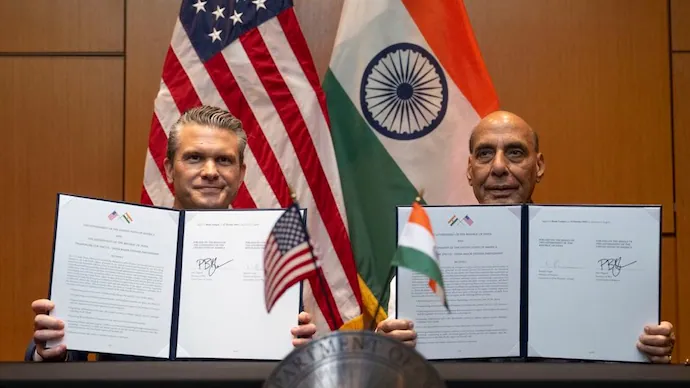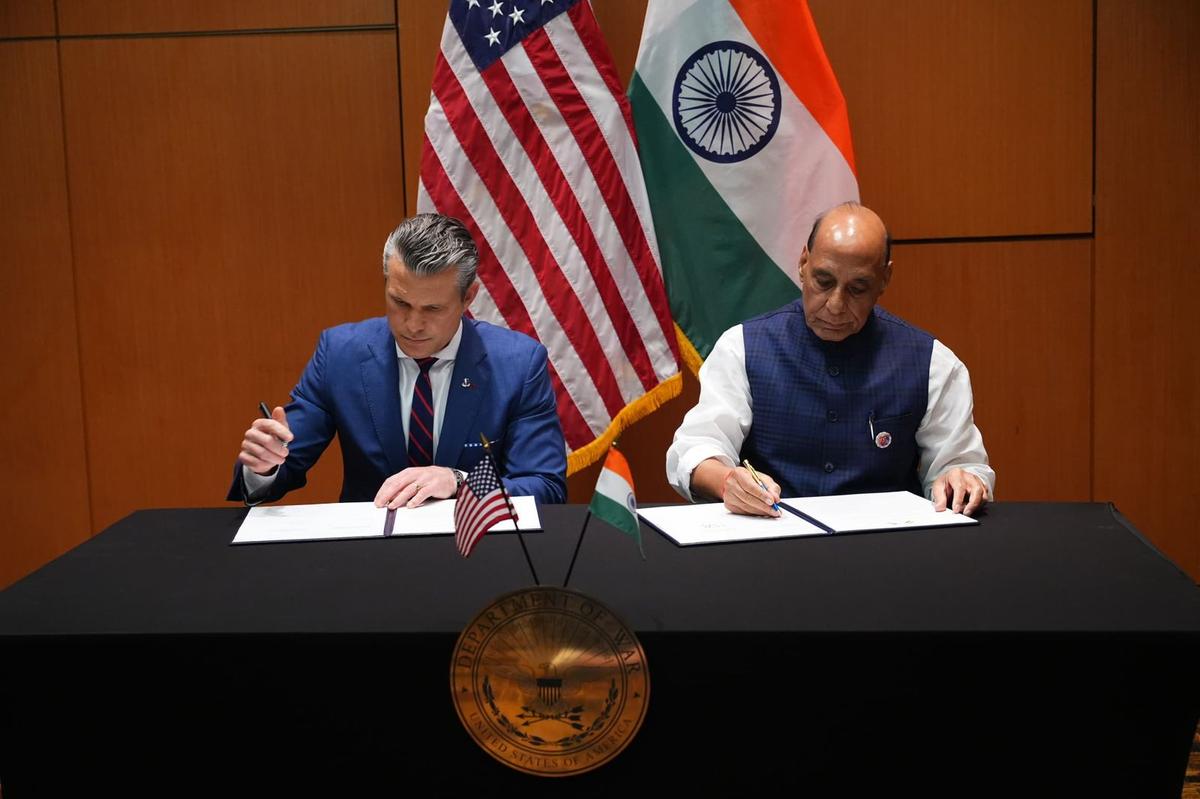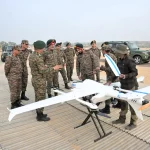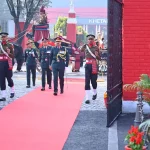India and the United States have formalized a 10-year defence framework agreement, marking a significant advancement in their strategic partnership. Signed on October 31, 2025, in Kuala Lumpur, Malaysia, the pact aims to enhance military collaboration, technology sharing, and joint initiatives, underscoring the deepening ties between the two nations amid evolving regional security challenges.
The Signing Ceremony
The agreement, titled the “Framework for the US-India Major Defence Partnership,” was inked during a bilateral meeting on the sidelines of the ASEAN Defence Ministers’ Meeting-Plus (ADMM-Plus). India’s Defence Minister Rajnath Singh and US Defence Secretary Pete Hegseth were the key signatories, with senior officials from both sides in attendance. This in-person engagement followed three prior telephonic discussions between the ministers, highlighting the momentum in defence dialogues.

Objectives of the Pact
The framework provides a comprehensive policy direction for the India-US defence relationship over the next decade. It emphasizes strengthened coordination, information sharing, and technological cooperation, while focusing on capacity building and joint military exercises. The agreement positions defence as a core pillar of bilateral relations, aiming to foster interoperability and integration of defence industrial supply chains. It also supports collaborative efforts with like-minded partners to address shared security concerns.
Background and Context
This pact builds on prior commitments, including a February 2025 joint statement by Prime Minister Narendra Modi and President Donald Trump, which outlined plans for a renewed defence framework. It reflects ongoing high-level engagements, such as the recent meeting between India’s External Affairs Minister S. Jaishankar and US Secretary of State Marco Rubio, where bilateral ties and regional issues were discussed. The signing occurs against the backdrop of strategic imperatives in the Indo-Pacific, where both nations view their partnership as a counterbalance to regional assertiveness, particularly from China. Trade negotiations, including a proposed Bilateral Trade Agreement, continue separately, with Indian officials emphasizing a cautious approach to ensure long-term sustainability.
Statements from Leaders
Defence Minister Rajnath Singh described the agreement as ushering in a “new era” in the partnership. In a statement, he said, “We signed the 10-year ‘Framework for the US-India Major Defence Partnership’. This will usher in a new era in our already strong defence partnership.” He further noted, “It is a signal of our growing strategic convergence and will herald a new decade of partnership,” adding that the collaboration is “critical for ensuring a free, open, and rules-bound Indo-Pacific region.”
US Defence Secretary Pete Hegseth echoed these sentiments, stating, “Our defence ties have never been stronger.” He elaborated, “This 10-year US-India Defence Framework is ambitious. It’s a significant step for our two militaries, a roadmap for deeper and even more meaningful collaboration ahead. It underscores America’s long-term commitment to our shared security and our strong partnership.” Hegseth also highlighted the partnership as “one of the most consequential US-India relationships in the world,” built on “shared interests, mutual trust, and commitment to a secure and prosperous Indo-Pacific region.”
Implications for Bilateral Relations and Regional Security
The agreement signifies a robust commitment to elevating defence cooperation, potentially leading to increased joint production, technology transfers, and military exercises. For bilateral relations, it reinforces defence as a foundational element, complementing economic and diplomatic engagements. Regionally, it bolsters efforts toward stability in the Indo-Pacific, aligning with initiatives like the Quad and counter-terrorism collaborations. Experts view this as a strategic move to deter potential threats, enhancing deterrence and interoperability. While trade tensions persist, the pact demonstrates that strategic priorities remain insulated, fostering a multifaceted partnership for long-term global stability.













